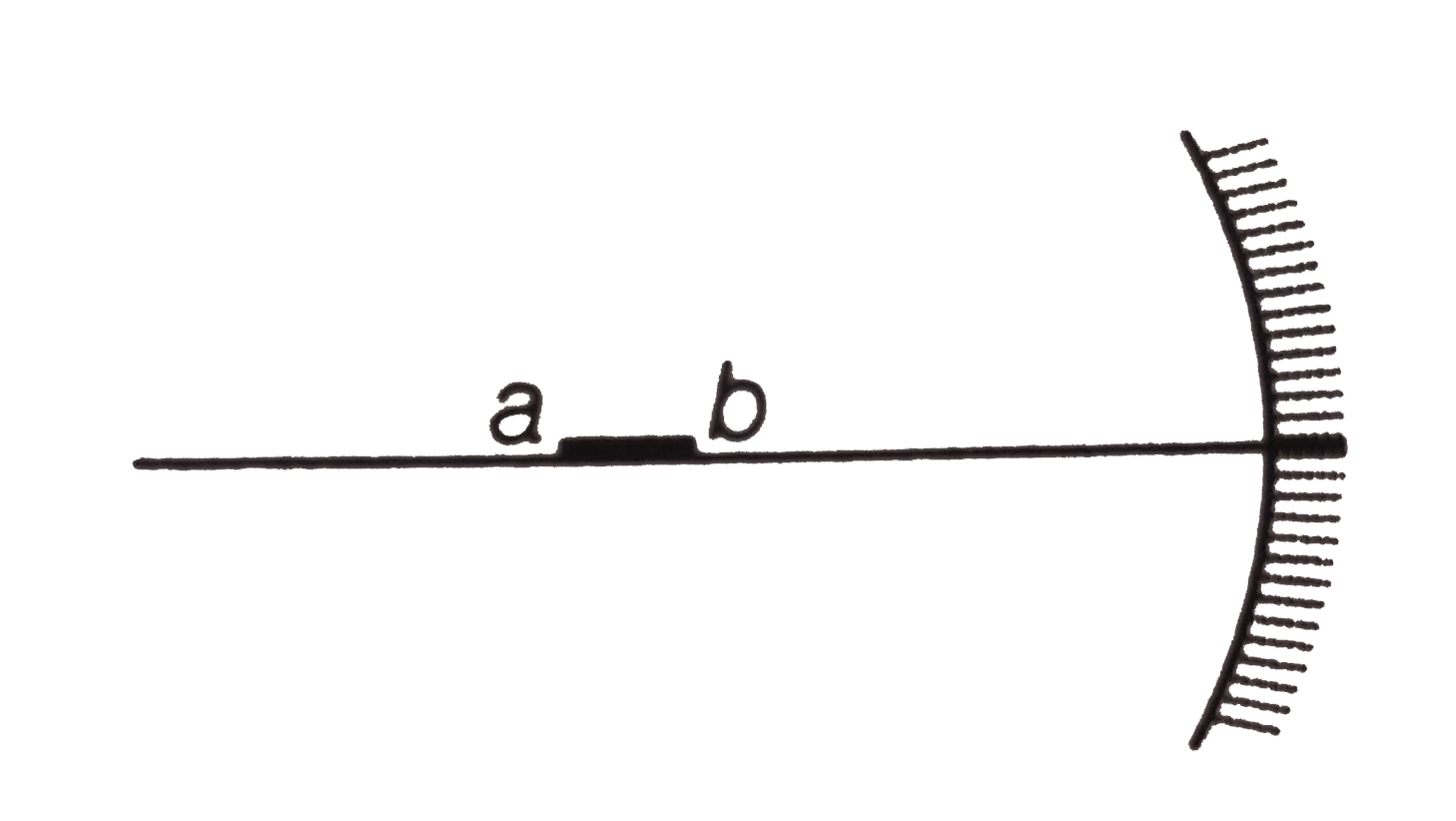An object of height 20 cm is kept at a distance of 48 cm in front of a concave mirror of focal length 12 cm. If the mirror forms a virtual, diminished image of the object then calculate the distance of the image from the mirror.
To solve the problem step by step, we will use the mirror formula and the given data.
Step 1: Identify the given values
- Height of the object (h) = 20 cm
- Distance of the object from the mirror (u) = -48 cm (the negative sign indicates that the object is in front of the mirror)
- Focal length of the concave mirror (f) = -12 cm (the negative sign indicates that it is a concave mirror)
Step 2: Write down the mirror formula
The mirror formula is given by:
1f=1v+1u
where:
- f = focal length of the mirror
- v = distance of the image from the mirror
- u = distance of the object from the mirror
Step 3: Substitute the known values into the mirror formula
Substituting the values we have:
1−12=1v+1−48
Step 4: Rearrange the equation to solve for 1v
Rearranging the equation gives:
1v=1−12+148
Step 5: Find a common denominator and simplify
The common denominator for -12 and 48 is 48. Thus, we can rewrite the fractions:
1−12=−448
Now substituting back into the equation:
1v=−448+148=−4+148=−348
Step 6: Solve for v
Taking the reciprocal gives:
v=48−3=−16 cm
Step 7: Interpret the result
The negative sign indicates that the image is formed on the same side as the object, which is consistent with the information that the image is virtual.
Final Answer
The distance of the image from the mirror is 16 cm in front of the mirror.
---
- Height of the object (h) = 20 cm
- Distance of the object from the mirror (u) = -48 cm (the negative sign indicates that the object is in front of the mirror)
- Focal length of the concave mirror (f) = -12 cm (the negative sign indicates that it is a concave mirror)
The mirror formula is given by:
1f=1v+1u
where:
- f = focal length of the mirror
- v = distance of the image from the mirror
- u = distance of the object from the mirror
Substituting the values we have:
1−12=1v+1−48
Rearranging the equation gives:
1v=1−12+148
The common denominator for -12 and 48 is 48. Thus, we can rewrite the fractions:
1−12=−448
Now substituting back into the equation:
1v=−448+148=−4+148=−348
Taking the reciprocal gives:
v=48−3=−16 cm
The negative sign indicates that the image is formed on the same side as the object, which is consistent with the information that the image is virtual.
The distance of the image from the mirror is 16 cm in front of the mirror.
Topper's Solved these Questions
- LIGHTBOOK - ICSECHAPTER - LIGHTEXERCISE - TOPIC 2 Spherical Mirrors (4 Marks Questions )
9 Videos
- LIGHTBOOK - ICSECHAPTER - LIGHTEXERCISE - TOPIC 2 Spherical Mirrors (2 Marks Questions )
22 Videos
- LAWS OF MOTIONBOOK - ICSECHAPTER - LAWS OF MOTIONEXERCISE - EXERCISE - 3(E) (Numericals)
31 Videos
- MAGNETISM BOOK - ICSECHAPTER - MAGNETISM EXERCISE - EXERCISE-10(B) (Multiple Choice Type)
2 Videos
Similar Questions
An object of height 20 cm is kept at a distance of 48 cm in front of a concave mirror of focal length 12 cm. If the mirror forms a virtual, diminished image of the object then calculate the magnification
View SolutionAn object of height 2 cm is placed at a distance 20cm in front of a concave mirror of focal length 12 cm. Find the position, size and nature of the image
View SolutionA point object is placed at distance of 30 cm in front of a convex mirror of Focal length 30 cm. The image will form at
View SolutionAn object is kept in front of a concave mirror of focal length 15 cm. The image formed is three times the size of the object. Calculate the two possible distances of the object from the mirror.
View SolutionAn object is kept in front of a concave mirror of focal length 15 cm. The image formed is three times the size of the object. Calculate the two possible distances of the object from the mirror.
View SolutionAn object is placed at a distance of 20 cm from a concave mirror of focal lenght 10 cm. What is the image distance?
View Solution
A small object ab of size 1mm is kept at a distance of 40 cm form a concave mirror of focal length 30 cm. Make image of this object.
View SolutionAn object is placed 40 cm from a concave mirror of focal length 20 cm. The image formed is
View SolutionAn object is placed at a distance of 48 cm in front of a concave mirror of focal length 24 cm.
a. Find the position of image.
b. What will be the nature of image?
View SolutionAn object is placed at 6 cm distance in front of a concave mirror of focal length 4 cm.
Find the position of the image period.
View Solution
